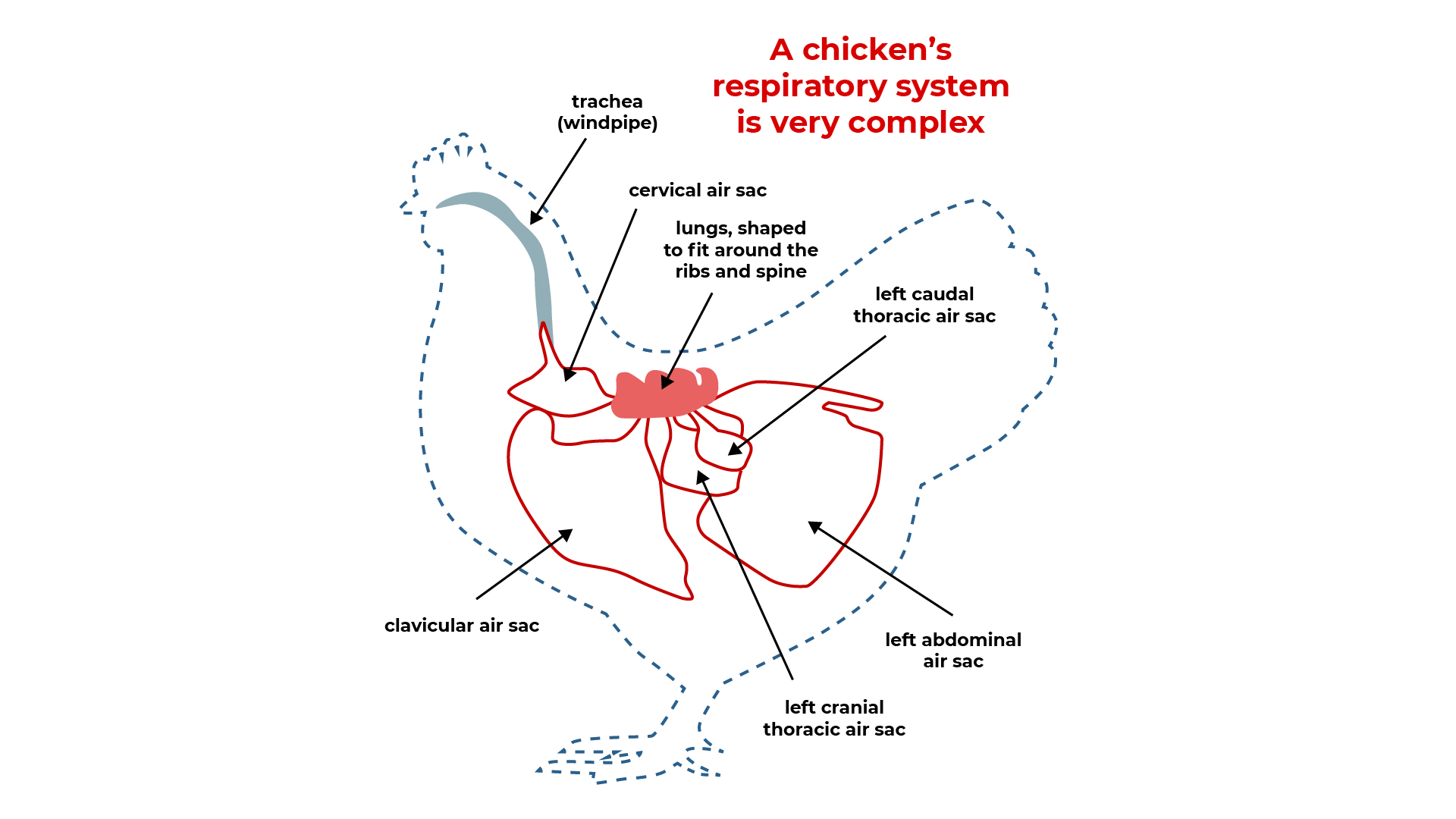1. Respiratory System

By the end of the session you will understand:
- the structure and function of the lungs
- the interaction with the blood circulation system
Starter keywords:
- Nasal cavity
- Trachea
- Bronchus
- Bronchiole
- Alveoli
- Lungs
- Diaphragm
- Ribs
- Intercostal muscles
- Mucus
- Cilia
- Cartilage

Look at the following paragraphs. Can you fill in the blanks? Either discuss the terms with your classmates or print out the PDF version below and write in your answers.
After entering through the ___________ and ___________,the air passes through the ___________. The tube then branches into two ___________, which branch further to form ___________. These end up at tiny air sacs called ___________, where gas exchange takes place.
The lungs are protected by bones called ___________. These move during breathing due to the action of ___________ ___________ which lie between the ribs. The ___________ is a muscle that forms the floor of the thorax, it also moves during breathing.
PDF - Download
Function of cilia and mucous

Goblet cells, that produce mucous, and cilia are found in the lining of the bronchi. The mucous traps dust and microbes to prevent them from reaching the lungs. The cilia can move, so they are able to work together to create waves to move the mucous with the dust and microbes trapped within it up to the mouth or nose to get rid of them.
This prevents lung infections, including pneumonia, bird/swine flu and TB.

Poultry respiratory system – air sacs
Chickens have nine air sacs, which are thin-walled bubble-like pockets that work as a system to draw air into the lungs (because their lungs can’t move and they don’t have a diaphragm), especially when flying and to prevent over heating during flight. Infections in these air sacs is a problem for poultry farmers.


Normal respiratory rates:
| Animal | Respiration rate |
| Cattle | 12-26 |
| Sheep | 12-20 |
| Pigs | 10-16 |
An increase in breathing rate or depth of breathing is a sign of illness, because the system isn’t working properly, because of infection or some other illness. Coughing is another symptom of lung problems.
Task:
Read through the information on the following 2 slides and set 10 questions for your peers to answer.
Interaction with the circulatory system - Resting
Whilst a sheepdog rests, its heart and lungs work together so it can produce energy to live, by respiring. When it breathes in, oxygen from the air enters its lungs. This oxygen is an essential for respiration to produce energy to live. The oxygen diffuses down a concentration gradient from a high concentration of oxygen in the lungs, to a lower concentration of oxygen in the blood, which flows through the lungs in capillaries. The blood then flows out of the lungs, back to the heart, where the oxygenated blood is then pumped to the rest of the dog’s body, to respiring tissues which use the oxygen to respire and therefore create energy.
Whilst resting, a dog’s respiration rate is about 12 breaths per minute and its heart rate is about 65 beats per minute.
Interaction with the circulatory system - Working
Whilst working, a dog’s body needs to work harder and therefore requires more energy. Energy is made by respiration and therefore whilst working, the dog needs to respire more. Oxygen is an essential part of respiration and an increase in energy requirement means an increase in oxygen requirement. An increase in the amounts of breaths and depth of breaths the dog takes in a minute will significantly increase the amount of oxygen that enters its body and diffuses into its blood and therefore is used to respire to create more energy. The dog’s heart will beat faster enabling more oxygen to reach the respiring tissues, faster.
Whilst working, a dog’s respiratory rate will increase to about 38 breaths per minute and the heart rate will be about 160 beats per minute.
Research Task
Internet-based or in textbooks on TB and swine/bird flu. Learners should present their information on the following document.
Conclusion
At the end of this session you should now understand:
- the structure and function of the lungs.
- the interaction with the blood circulation system.